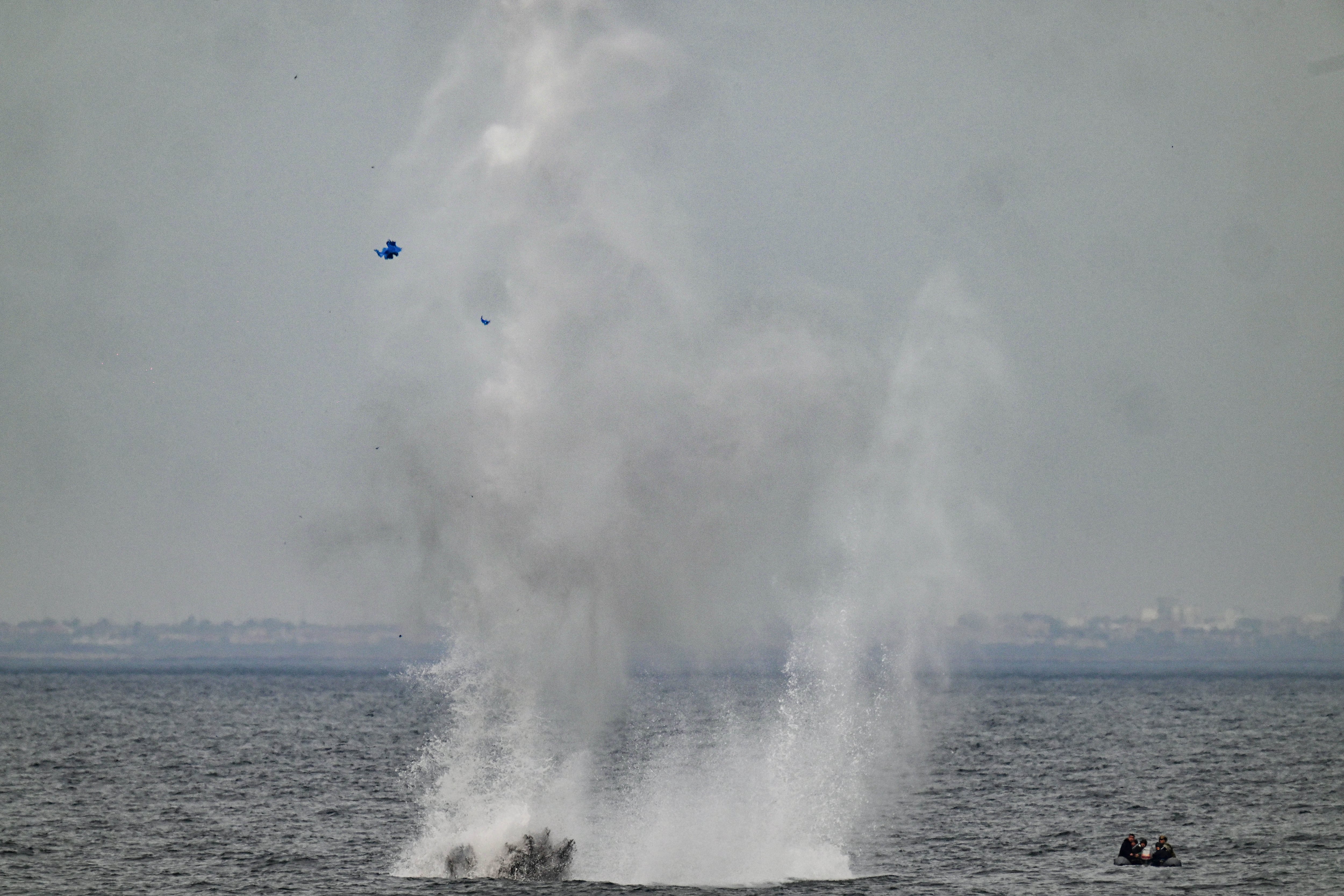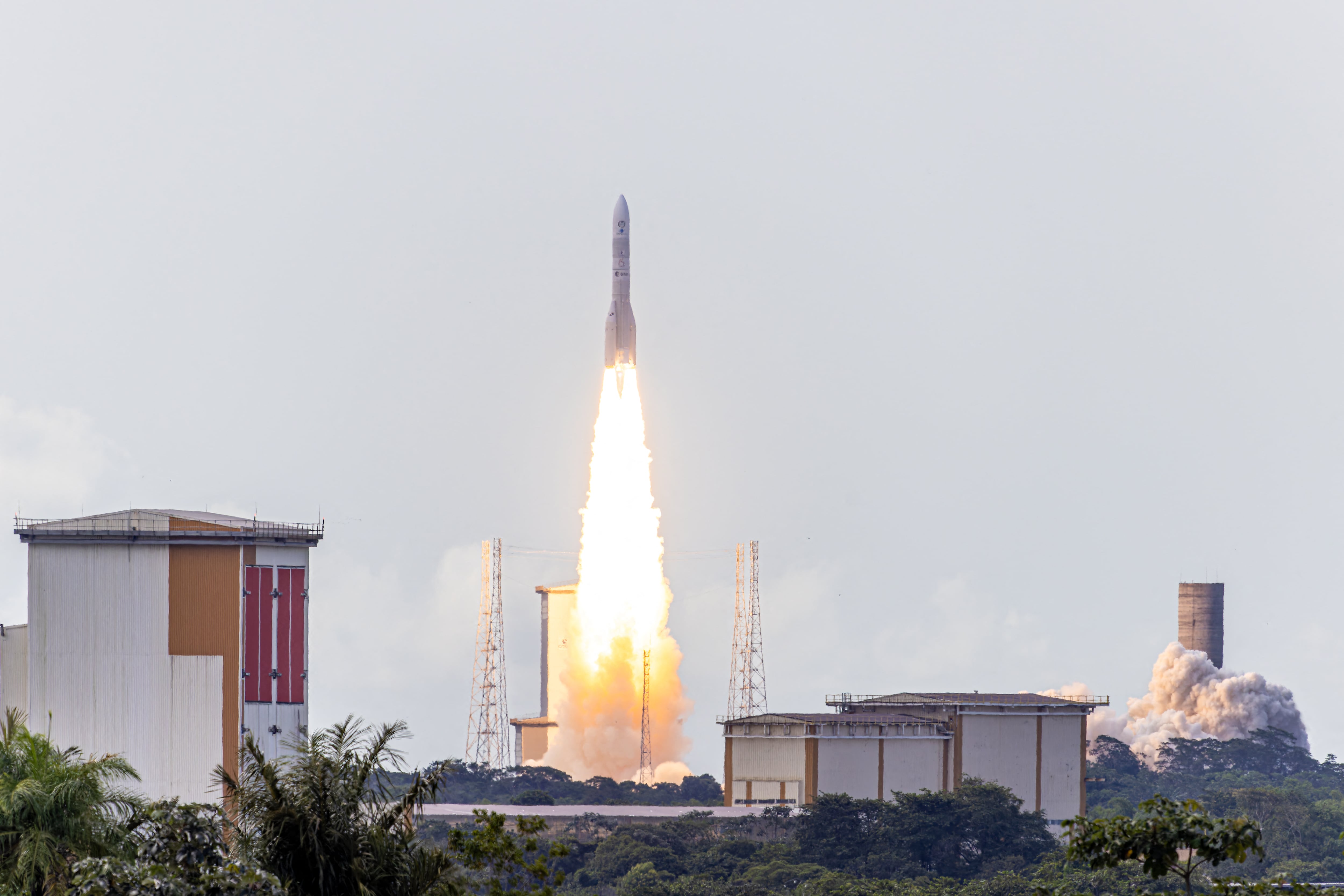PARIS – They may only cost a few hundred dollars to buy but the growth of incidents involving micro-UAVs has given birth to a potentially multimillion dollar industry to protect people and infrastructure from these threats.
You would have struggled to find much counter-UAV technology on public view at previous Paris Air Shows. Last week's exhibition, though, was different; there was plenty of evidence military, security forces and even industry organizations have turned their attention to the threat posed by mini and micro machines in the wrong hands.
Controp, MBDA and Thales Nederland were among the companies marketing equipment ranging from electro optical/imaging infrared turrets to radars and laser attack weapons.
Nor was it individual systems on offer. Thales briefed reporters on how its capabilities as an air defense systems integrator might find a role in counter-UAV, pulling together options such as ground surveillance radars, direction finders, acoustic sensors, command and control, electronic support, jamming, smart munitions and even drone interceptors into mini-air defense systems.
Although not at the show, British technology companies Blighter Surveillance Systems, Chess Dynamics and Enterprise Control Systems last month combined to launch an anti-UAV defense system to detect, classify and disrupt micro, mini and larger drones.
Mark Radford, the Blighter CEO, said the companies "were acutely aware of the urgent operational requirement from our customers for an effective and affordable anti-UAV system."
Governments in Europe are exploring what technology has to offer. British, French and German governments have held trials in recent months.
The French government ran multi-supplier trials in Captieux in March and there are a series of 18-month studies on various aspects of counter-UAV technology being undertaken by the French aerospace research laboratory ONERA and industry under a program known as Project Angelas.
Thales is leading on three of those studies.
A lot of the systems making their debut at Paris are already in service.
Controp marketing director Lori Erlich said she isn't allowed to say where or when, but the Tornado electro-optical/infrared system they unwrapped at the show "has been operationally deployed by Israel in a defense role."
Larry Dickerson, an analyst at Forecast International, reckons most of the technology depicted in today's counter-UAV sales brochures results from a repackaging of existing equipment to meet a new role.
"This technology has been around for many years. Companies are repurposing systems and slapping 'counter UAV' on them to gain attention," he said.
In some respects that's what Thales Nederland is doing with the introduction of new capability on its multipurpose Squire man-portable radar tuned to include the counter-UAV role.
Wim Schuttert, the executive responsible for sensor business development at the Dutch arm of Thales, said the new system has been operational for about six months in the Netherlands with the military and the police.
The clever bit in Squire is not being able to detect a small UAV, but classifying whether it's a bird or a plane, he said.
"Detection is not the issue. Everybody can detect an object. The big trick is discriminating small UAVs from birds. We have invested a lot in developing the algorithms to detect and discriminate a UAV from birds smaller than a blackbird," he said.
Countering the threat of covert aerial intrusions using cheap and unconventional means is not new.
The Israelis have been working in this area at least since 1987 when two Palestinian guerrillas seeking to infiltrate an Army base by flying hang gliders from south Lebanon killed six soldiers in the attack.
More recently, the availability of a new generation of small, cheap UAVs, often quadcopters or some other form of rotorcraft, have emphasized the growing threat posed by these machines.
And they have been grabbing headlines.
German Chancellor Angela Merkel had one land close by during a public appearance.
"The air defense system in that case was her [Merkel's] bodyguard, who picked up the UAV," according to Markus Martinstetter, an official at European weapon systems maker MBDA.
Other incidents recently have included a quadcopter crash on the grounds of the White House, and in France government buildings and nuclear energy plants are being overflown without the security forces being able to track down the culprit.
A cheap recreational machine costing a few hundred dollars can be turned into an aerial equivalent of an improvised explosive device while a spy UAV with a camera, video recorder and downlink might cost around $1,500 — although more sophisticated platforms can cost more than $25,000.
"You can buy these things on the Internet and easily put explosives on them but there is no efficient protection against them," said Martinstetter.
It's not just the threat posed by terrorists that the counter-UAV systems are aiming at. Defense forces are being offered ever more capable machines in the micro and mini sectors, which also need countering.
Example: Israeli firm Aeronautics was promoting a new drone bomb at Paris.
The Orbiter IK — the K stands for Kamikaze — is a loitering mini-drone with a wingspan of 2.2 meters and can carry 2.2 kilograms of explosives in its nose, as well as a camera.
Martinstetter, who briefed reporters at the show on work MBDA Germany had been doing testing the destruction of small UAVs using a laser weapon technology demonstrator, said the Orbiter is just the sort of target you would use the weapon on.
The laser, which produces a 40-kilowatt beam, will be able to destroy mini-UAVs at a range of five kilometers once it reaches operational status, potentially within five years, Martinstetter said.
Test firings with a 20-kilowatt beam have caused a micro-drone flying 500 meters away to burst into flames and crash.
Dickerson reckons lasers might provide an answer even though the years of work on anti-air applications have yielded little interest in fielding such a system. Mainly, the technology needs more work.
"There is potential for lasers to eliminate the need for man-portable and other types of surface-to-air missiles in the future. Offering a 'counter-UAV' capability helps gain these programs attention and perhaps win them additional financial support," he said.
But lasers are an expensive way of solving the problem.
Radio frequency disruption, GPS jamming, small guided missiles, cannon-fired smart munitions, even a UAV deploying a net are among other solutions being looked at.
Executives here said part of the problem is that blowing up, or in the case of a laser, burning, even a small UAV in urban areas or over critical infrastructure may be unacceptable, hence ideas like the net.
Tom Kington contributed to this story
Andrew Chuter is the United Kingdom correspondent for Defense News.








